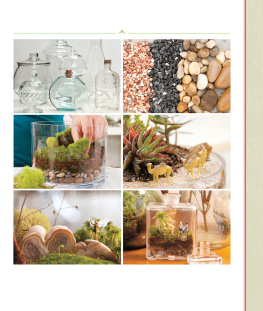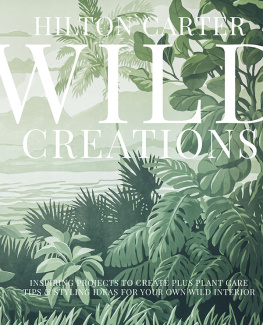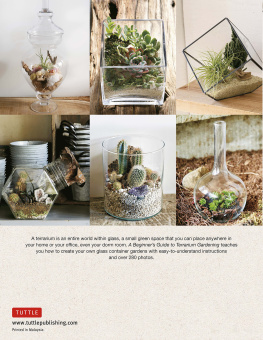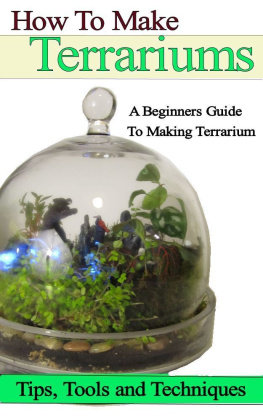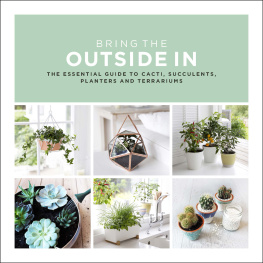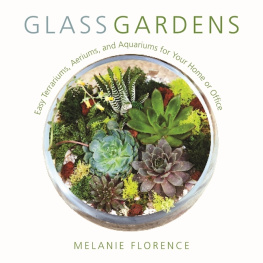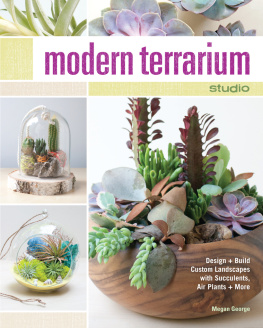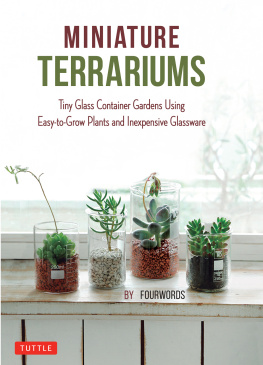

Introduction: The Story of Twig Terrariums

The soil is the great connector of our lives, the source and destination of all.
Wendell Berry, The Unsettling of America, 1977



Twig Terrariums, our Brooklyn-based terrarium company, all started with a glass container and the crafty passion of two old friends. For years, we had been getting crafty together once a week, making bookmarks and greeting cards. But one day Michelle bought a small glass cruet and randomly decided that its destiny was to become a terrarium. It was very important to her that she had all the info necessary to make a healthy terrarium inside the tiny jar she adored. She started her quest for directions online and brought her findings to her college chemistry professor to make sure she hadnt missed anything. Happy, sprightly moss soon made itself at home within the cruet.
Katy soon followed suit, inspired by Michelles enthusiasm and a little vintage mushroom jar she found at an antiques store in Englishtown, New Jersey. We loved how the terrariums looked so much like wonderful little gardens, and thats when we had the idea to populate them with miniatures and figurines. The small mushroom jar was soon inhabited by a band of hobos roasting weenies round a campfire. And Michelles cruet came to house a couple of young adventurers exploring their terrain.
One terrarium begat others, and soon we had completely abandoned making bookmarks and greeting cards on craft nights. The hunt for cool figurines was in full swing, and we experimented with different moisture levels, soils, and moss to be sure we got it just right. Our small Brooklyn apartments became jam-packed with dozens of terrariums and glass containers of all shapes and sizes. Soon it became clear that we needed to start moving those terrariums out of our apartments, so we decided to try our hand at selling them. But first, we needed a name for our company. Weeks of brainstorming ensued (some contenders included Peepshow Terrariums and Grow Terrariumsboring!), and oodles of logo ideas were passed back and forth.
Frustrated, but still having fun, we hit Prospect Park in beautiful Brooklyn to relax in the sunshine and take a break from thinking. When lo! What should lie within reach of our lounging bodies but a lone twig... a perfect, knotty, excellent twig. And we just knew it: Twig Terrariums was born! (We still have the twig that inspired it all.)
Our first decision as Twig Terrariums proprietors was to set up a booth at the illustrious Brooklyn Flea, a local market that Katy had heard was the bees knees for aspiring artists and crafters. Our first time selling at the Flea was a lovely April day, and the crowds just ate us up! We never expected such a huge response, nor that a writer from the New York Times would happen along and spot our wares. The rest is historyfrom there on out, we knew that our moss nerdiness had a destiny.
The future of Twig quickly took shape. Soon after the Times article hit with its big, bright pictures of our miniature worlds, e-mails and orders came flooding in. We moved our mossy operation from our respective dining-room tables to a cute studio in a converted garage on a quiet block near Prospect Park. We began creating commissioned pieces, introduced DIY kits that we shipped all around the country, and started offering workshops and events around town. Local stores reached out to us, asking to carry our unique creations, and after one year, we even had to move into a bigger studio.
But this book is not about usits about you, and how you can start making terrariums, too! For city folk like us with nary a fire escape, terrariums are a way to bring a plot of land into the home. But no matter where you live, terrariums are therapeutic to create and peaceful to observe. Everything you need to know about making your very own tiny world is right here. From picking plants and containers to assembling your terrariums, we walk you through each step of the way. Plus, we show you how to make each one extra special by creating quirky worlds with figurines and miniatures to mimic peoples real lives and interests. With Tiny World Terrariums, we hope to share our love of little green worlds with everyone. Read on, verdant friends.

A Brief History of Terrariums

pteridomania {noun} fern fever: a term coined in 1855 by Charles Kingsley in reference to the Victorian fern-collecting craze


THE WARDIAN CASE AND BEYOND
A terrarium, by definition, is a transparent enclosure for keeping or growing plants. The container allows plants to remain in their original soil, maintain their own air climate, and stay moist. There are two types of terrariums: closed terrariums, which allow plants and mosses with higher moisture needs to thrive, and open terrariums for those plants that require a drier environment. The first terrarium on record was accidentally discovered in England in 1829 by Nathaniel Ward, and this discovery revolutionized how plants could be maintained in low-humidity conditions. Wards garden in Wellclose Square housed many different types of fernsa passion inspired by a trip to Jamaicabut the plants were dying from the coal smoke and sulfuric acid that were polluting the air of nineteenth-century London. At the time, Ward was also collecting moth cocoons in small bottles, and he noticed a few fern spores were thriving in small bits of soil in the bottles. He had a carpenter build a small glass case (which became known as a Wardian case) and filled it with soil and ferns to test his hypothesis. Surprise! The ferns flourished in the glass container with little to no care provided by Ward himself.
Wards discovery was the product of a series of chance events, for sure. Without these chance events, who knows how long the world would have had to wait to enjoy terrariums?
The Victorian era was chock-full of botanical discoveries. The ability to transport plants across land and sea made it possible to study them outside of their native lands, and Wards discovery prompted a 90 percent increase in plant transport. Thousands of new hybrid plants were introduced and many advances in biological studies were made: from the work of Charles Darwin, who was an avid botanist, to that of Gregor Mendel, who published a study that pioneered plant genetics, to Ward himself, who had visions of using botany to help the sick, elderly, and mentally ill (today, this is called horticultural therapy, and its used worldwide as an effective rehabilitation tool). Needless to say, the number of botanical studies taking place in this era was incredible, eventually leading to monumentally important things like the discovery of penicillin and the advent of the worldwide tea industry! (The Wardian case made possible the first successful transport of twenty thousand tea seedlings from China in 1843.) As the Wardian case evolved and gained popularity, its name changed to terrarium, derived from the Latin
Next page
